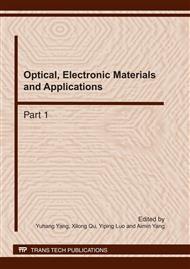p.373
p.378
p.383
p.388
p.393
p.397
p.402
p.409
p.414
Numerical Investigations of Young’s Modulus for Composites with Inclined Glass Fiber for Wind Energy Application
Abstract:
Young’s Modulus of glass fiber reinforced composites for wind energy applications are studied using numerical method. The effect of volume content of glass fiber on the Young’s modulus of composites is investigated. Results indicate the relation between them is nearly linear. In order to explore the effect of inclined angle of fiber on the Young’s modulus of composites, different finite element models with inclined glass fiber are developed via the ABAQUS Scripting Interface. Results indicate that Young’s modulus of the composites strongly depends on the inclined angle of fiber. A U-shaped dependency of the Young’s modulus of composites on the inclined angle of fiber is found, which agree with the experimental results. The results of the investigation are expected to provide some design guideline for the microstructural optimization of the glass fiber reinforced composites.
Info:
Periodical:
Pages:
393-396
Citation:
Online since:
March 2011
Authors:
Price:
Сopyright:
© 2011 Trans Tech Publications Ltd. All Rights Reserved
Share:
Citation:


